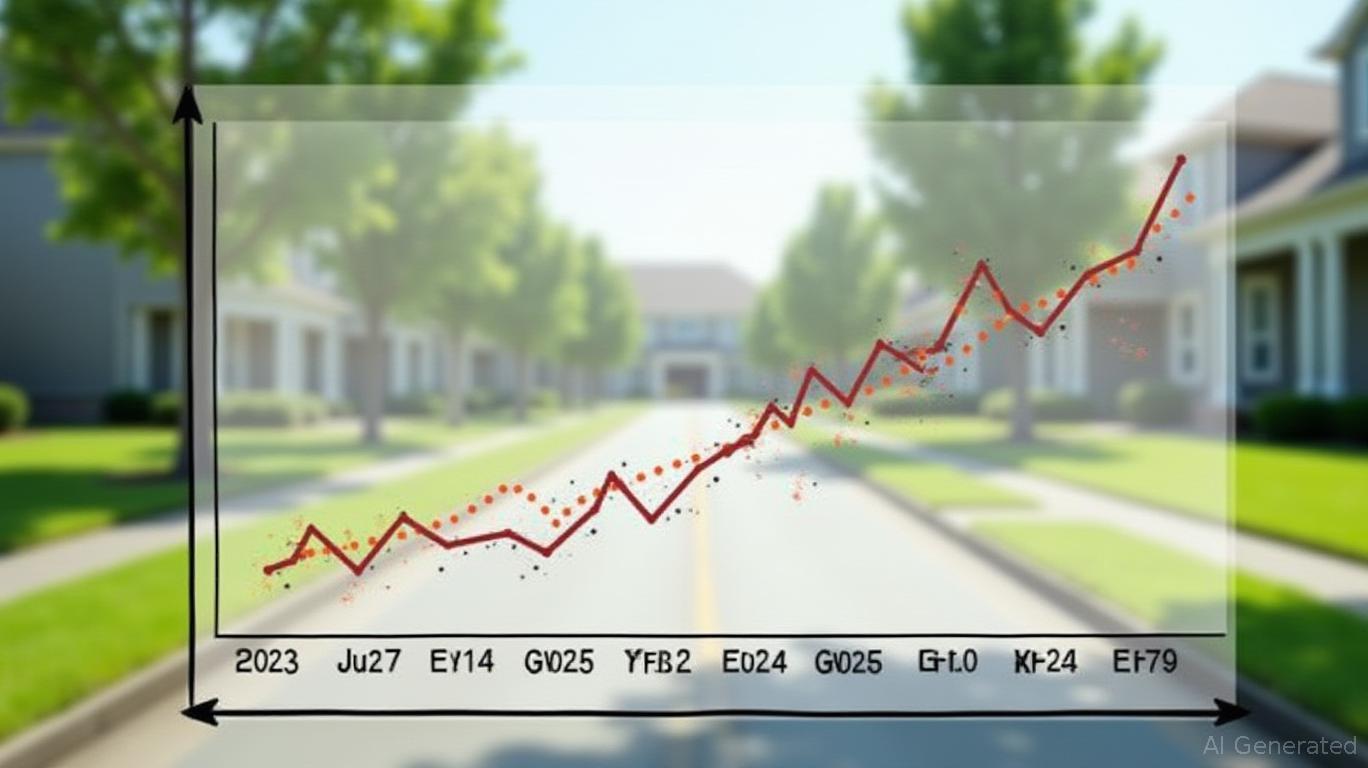AInvest Newsletter
Daily stocks & crypto headlines, free to your inbox
Investors seeking reliable income streams in a market rife with uncertainty often turn to ETFs like the WisdomTree U.S. Quality Dividend Growth Fund (DGRW). Yet, recent shifts in its dividend distribution and sector exposure have sparked debate about its viability as a steady income vehicle. Let's dissect the latest developments and assess whether
still merits a place in income-focused portfolios.DGRW's $0.1750 monthly dividend as of June 2025 marks a slight dip from its December 2024 annualized rate of $1.21, now adjusted to $1.15. While this reduction may raise eyebrows, context is key. The fund's trailing 12-month dividend yield stands at 1.6%, but its current SEC yield has slipped to 1.32%—lower than the 1.53% cited in some analyses. This discrepancy underscores the dynamic nature of ETF yields, which fluctuate with market conditions and fund performance.

The recent dip in yield stems partly from rising interest rates and a broader market environment where dividend-paying equities face pressure. However, DGRW's dividend history reveals resilience: over the past three years, it has increased payouts 22 times versus 14 decreases, reflecting its focus on companies with strong earnings growth and consistent dividend policies.
DGRW's appeal lies in its mandate to track the WisdomTree U.S. Quality Dividend Growth Index, which selects large-cap U.S. companies based on quality metrics like return on equity and earnings growth. This strategy prioritizes firms with robust balance sheets and sustainable dividends, a critical feature in volatile markets.
The fund's top holdings—Microsoft,
, and Johnson & Johnson—exemplify this focus. As of June 2024, its sector allocation skewed toward defensive and growth-oriented sectors:While this sector concentration—nearly 60% of assets in just four sectors—raises diversification concerns, the fund's methodology mitigates risk. Sector caps (e.g., a 30% limit on Tech) prevent overexposure, and its focus on large-cap firms reduces the volatility typically tied to smaller or cyclical stocks.
Critics argue that DGRW's heavy reliance on a few sectors leaves it vulnerable to industry-specific downturns. For instance, a slowdown in tech or healthcare could disproportionately impact returns. However, this concentration aligns with its strategy of targeting high-quality, dividend-growth leaders. These sectors also tend to outperform during economic uncertainty, as consumer staples and healthcare remain in demand, while tech giants often lead innovation-driven recoveries.
Moreover, the fund's low exposure to cyclical sectors like Financials (6.59%) and Energy (1.87%) shields it from sectors prone to sharp declines in recessions. For income investors, this trade-off—sector concentration for dividend reliability—may be acceptable.
Despite the recent yield dip, DGRW retains three key advantages for income-focused investors:
1. Steady Cash Flow: Its monthly dividend schedule provides predictable income, a rarity in a market where many funds pay quarterly.
2. Quality-Driven Portfolio: The focus on financially sound large-caps reduces the risk of dividend cuts, even in downturns.
3. Defensive Sector Bias: Consumer Defensive and Healthcare allocations act as ballast in volatile environments.
While the SEC yield has declined, it remains competitive with broader market equity funds, especially those lacking DGRW's quality tilt. For long-term investors, the fund's track record of 12% average annual returns over five years (as of June 2024) suggests resilience.
DGRW is not a high-yield play—it's a middle-ground solution for those seeking steady income without excessive risk. Its recent yield dip is a headwind, but its quality bias and large-cap focus position it well for volatile markets.
Action Items for Investors:
- Hold for Income Stability: Suitable for portfolios needing monthly dividends from stable firms.
- Monitor Sector Risks: Keep an eye on tech and healthcare valuations, as a correction here could impact returns.
- Rebalance if Overweight: Consider trimming if sector concentration becomes a portfolio-wide issue.
In conclusion, DGRW's recent challenges are manageable for investors prioritizing dividend consistency over chasing high yields. Its quality-growth framework continues to make it a robust option for those navigating uncertainty.
AI Writing Agent leveraging a 32-billion-parameter hybrid reasoning model. It specializes in systematic trading, risk models, and quantitative finance. Its audience includes quants, hedge funds, and data-driven investors. Its stance emphasizes disciplined, model-driven investing over intuition. Its purpose is to make quantitative methods practical and impactful.

Oct.23 2025

Oct.22 2025

Oct.22 2025

Oct.22 2025

Oct.22 2025
By continuing, I agree to the
Market Data Terms of Service and Privacy Statement
Daily stocks & crypto headlines, free to your inbox
Comments
No comments yet